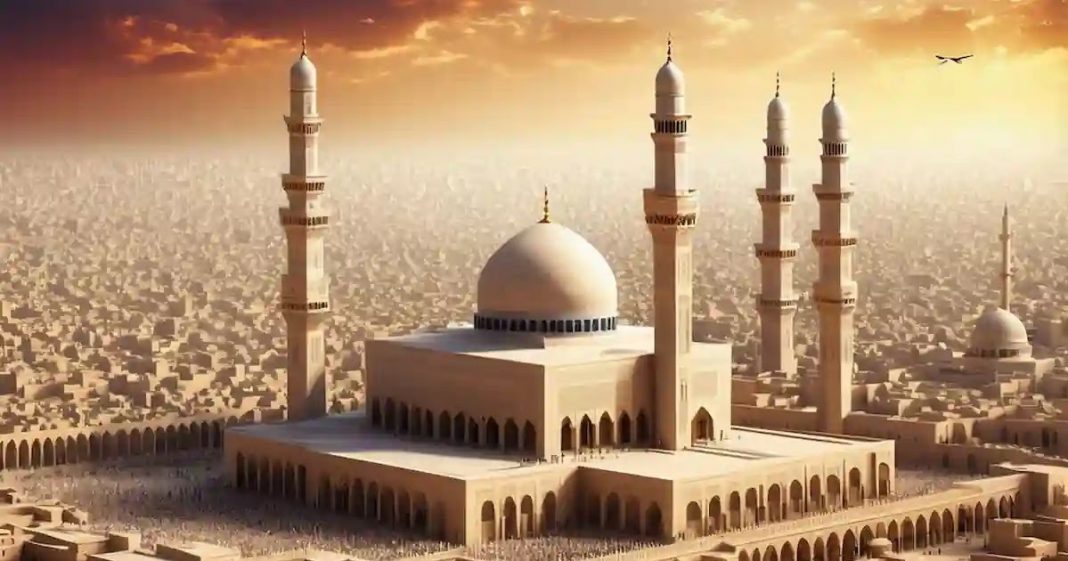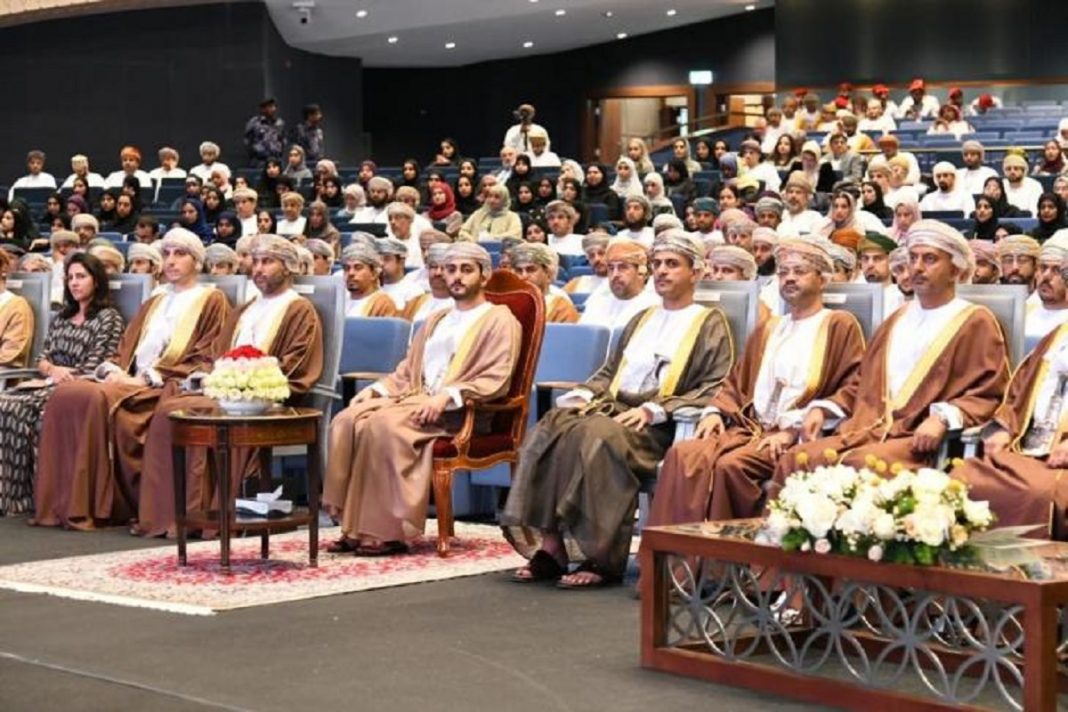Gabriel G. Tabarani
In the glittering skylines of Doha, Dubai, and Manama, mosques rise alongside glass towers, and ministries of religious affairs sit next to sovereign wealth funds. In the Arab states of the Gulf, Islam has long been more than a personal faith—it has been a pillar of statecraft, a tool for national cohesion, and increasingly, a platform for global influence. Yet, as these monarchies move deeper into the twenty-first century, the story of “official Islam” in the Gulf is one of striking paradox: a religion deeply embedded in state institutions but still profoundly shaped by transnational forces.
The Gulf’s religious establishments—ministries, sharia courts, Islamic universities, and fatwa councils—did not emerge in a vacuum. For much of their early history, the rulers of these small, strategically located societies had neither the bureaucratic apparatus nor the trained personnel to institutionalize religion. Instead, they borrowed. Judges were imported from Saudi Arabia or Egypt, religious scholars trained in Cairo’s Al-Azhar or Najaf in Iraq, and legal codes borrowed heavily from Ottoman and Egyptian precedents. If Gulf rulers wanted to regulate Islamic education, adjudicate disputes, or oversee charitable endowments, they often turned to foreign expertise.
That legacy matters today. Unlike Egypt’s Al-Azhar or Saudi Arabia’s Islamic Medina University, no Gulf state developed a centuries-old religious institution that could anchor its religious authority. Instead, what emerged after independence in the 1960s and 70s were bureaucracies that resembled their post-Ottoman counterparts: ministries of endowments and Islamic affairs, national school curricula with Islamic studies, codified family laws, and fatwa offices. The Gulf’s Islam was statified, but not self-sufficient.
Why does this matter? Because in Gulf monarchies, religious institutions are not just about faith—they are about politics. Sermons can be monitored, textbooks rewritten, and charities policed, all to ensure loyalty to the ruling family and stability in fragile pluralistic societies. In Bahrain, where a Shia majority lives under Sunni rule, the state simultaneously tolerates Shia religious institutions while tightly regulating their political visibility. In Kuwait, where Shia constitute a quarter of the population, separate legal and religious institutions have been established for each sect. Even Oman, dominated by the Ibadi sect, deliberately downplays sectarianism in its curriculum to promote unity.
Yet reducing these institutions to instruments of regime control misses the bigger picture. Gulf rulers also see them as tools of nation-building. Monumental mosques in Doha and Muscat are not just places of worship—they are symbols of national identity. The UAE’s Ministry of Tolerance and Coexistence, created in 2016, is not only a response to its enormous expatriate population but also a branding exercise in “moderate Islam.” These efforts are about defining a uniquely Qatari, Emirati, or Omani Islam that can bind diverse societies together.
But here lies the paradox: while these states want to cultivate a national brand of Islam, they remain deeply enmeshed in global religious currents. Shia Muslims in Kuwait or Bahrain continue to follow religious authorities in Najaf or Qom. Sunni networks still look to scholars trained in Egypt or Saudi Arabia. And even the boldest Gulf experiments in religious diplomacy rely on imported talent.
Take Qatar and the UAE. Both have invested heavily in rebranding themselves as transnational nodes of Islamic thought. Doha hosted the influential Egyptian cleric Yusuf al-Qaradawi for decades, while Abu Dhabi has built alliances with Mauritanian scholar Abdullah bin Bayyah and Egypt’s Al-Azhar. The result has been the establishment of new organizations like the International Union of Muslim Scholars in Qatar or the Muslim Council of Elders in the UAE—platforms that project soft power far beyond their borders. This strategy is less about producing a uniquely Gulf Islam and more about curating and redistributing global Islamic discourse. In essence, their model is not “produce and export” (like Saudi Arabia or Egypt) but “import, host, and re-export.” It is an ambitious form of religious globalization, but it raises an awkward question: can a borrowed Islam ever become a national one?
The challenge is compounded by the region’s sectarian and demographic realities. Efforts to unify religious codes often backfire, crystallizing divisions instead of erasing them. Bahrain’s attempt to impose a single family law ended with sharper distinctions between Sunni and Shia courts. Kuwait recently codified separate personal status laws for its Shia citizens. Far from dissolving sectarian boundaries, state involvement often makes them more rigid.
Meanwhile, globalization has brought another tension: how to reconcile Islamic law with increasingly diverse, multicultural societies. The UAE’s 2021 legal reforms limited the application of sharia in criminal cases and, in 2024, introduced a dual personal status system—sharia-based for Muslims, secular for non-Muslims. Qatar, under pressure to modernize its education system, cut back on religious instruction in favor of English and STEM, a move advised by the U.S.-based RAND Corporation. In both cases, official Islam bends to the demands of modernity and global integration. But the trade-off is clear: as religion becomes more domesticated and bureaucratized, it risks losing the organic vitality that once connected Gulf societies to the wider Muslim world.
Where does this leave the Gulf today? On one hand, the region has built remarkably powerful religious bureaucracies. Ministries of Islamic affairs oversee mosques, regulate charities, and certify religious education. Fatwa councils issue state-approved interpretations. Universities churn out graduates in Islamic law. For the average citizen, encounters with Islam—from school to court to Friday prayer—are often mediated by the state.
On the other hand, these structures remain fragile precisely because they are not deeply rooted in local tradition. They depend on imported scholars, borrowed curricula, and global networks. This creates both opportunities and vulnerabilities. Qatar and the UAE can leverage their transnational hubs to project soft power, but they also risk alienating domestic constituencies who see religion as overly instrumentalized. Kuwait and Bahrain can negotiate with their Shia communities through sectarian duality, but at the cost of perpetuating division. Oman may preserve unity through Ibadi exceptionalism, but only by retreating from transnational engagement.
In the long run, the real question is whether the Gulf can move beyond its “import, host, re-export” model to produce a genuinely indigenous religious voice. Can Doha or Abu Dhabi create the next Al-Azhar or the Islamic Medina University, institutions that shape not just their own societies but global Islam? Or will they remain nodes in a network dominated by others?
For now, the answer is uncertain. What is clear, however, is that official Islam in the Gulf is not just about mosques or ministries—it is about the very identity of states trying to balance tradition and modernity, unity and diversity, local legitimacy and global ambition. The Gulf monarchies may have built dazzling skylines and powerful sovereign wealth funds. But their experiment with religion—statified, bureaucratized, yet still profoundly transnational—may prove just as consequential for their future.
This article was originally published in Arabic on the Asswak Al-Arab website


